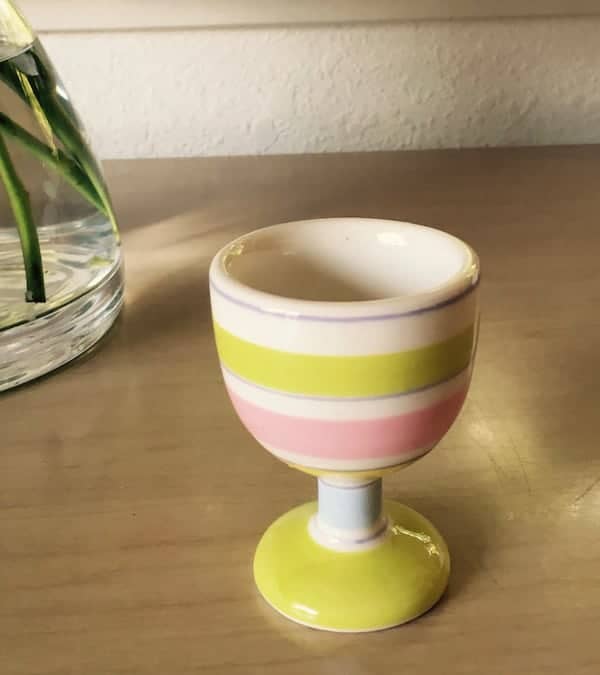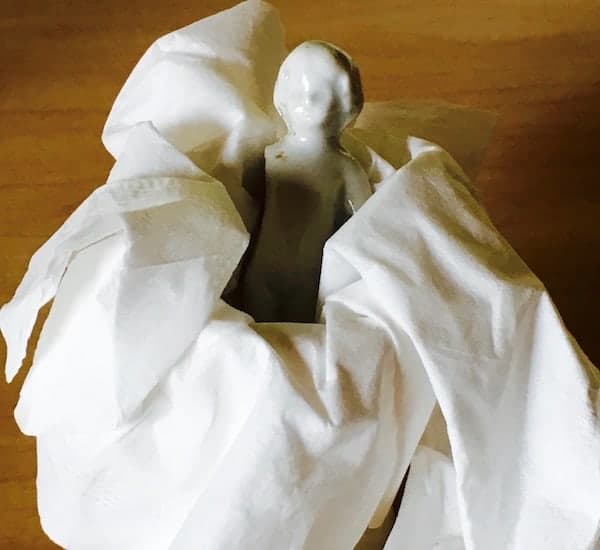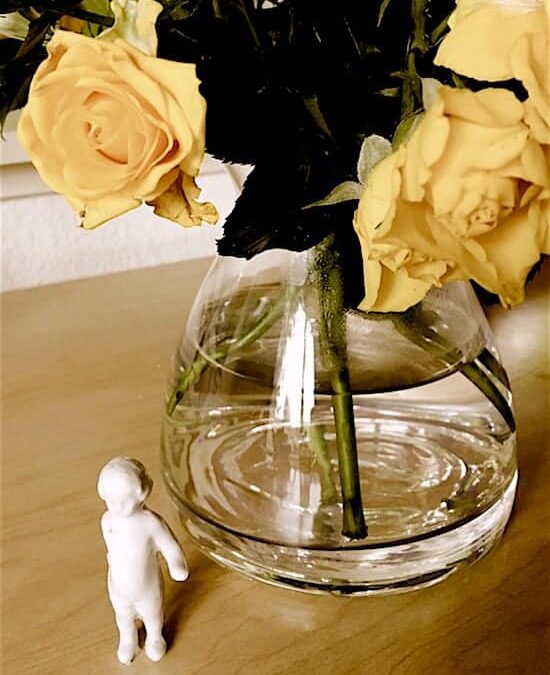What is this? I asked the saleswoman at the store in Berkeley. I held in my hand a tiny white figure of a little girl made of porcelain, with one arm missing. That’s a “frozen Charlotte” she smiled. There was a cautionary tale behind this figurine: it told of a girl who froze to death because—on a cold winter’s night— she refused to cover up her party dress with a coat.
The little dolls were a penny a piece in the late Victorian era—little girls in Europe and America loved them. And the bowl filled with gleaming white Charlottes had called to me. I brought one home.
The name comes from a poem written by poet, Seba Smith, who was inspired by a real-life story. A vain young woman, who refused to wrap herself in a warm coat on a winter’s night, froze to death riding to a New Year’s Eve ball in an open sleigh.
O, daughter dear,†her mother cried,“This blanket ’round you fold; It is a dreadful night tonight, You’ll catch your death of cold.
O, nay! O, nay!†young Charlotte cried, And she laughed like a gypsy queen; To ride in blankets muffled up, I never would be seen.
The tiny penny dolls were churned out between 1850 and 1920, made of hollow porcelain that could float in a child’s bath as a toy. The dolls, ranging from one inch up to 8 inches in height, were inexpensive and plentiful. Today they seem macabre and yet somehow innocent.
Once I acquired my first Frozen Charlotte I began plotting to procure others. A collection is born!
Here’s how simple it can be, the casual origin of shrines, collections, and special gatherings of otherwise unrelated objects.
In the case of Charlotte it came about by necessity, that highly regarded mother of invention. I needed to clean the table, completely! My little porcelain doll had no gift box or pedestal and had been affixed to the tabletop by melted candlewax. She had to be removed while the table surface was being cleaned. Where to put her?

She seemed so fragile—I could hardly just lay her on some hard surface. So I looked in my mystery cupboard (a place where items such as votive candles, easter baskets, vases and wicker baskets are kept). Aha! an egg cup. It was completely Charlotte-sized.
 Next problem: I couldn’t simply put the china doll into a china cup. One hard surface against another. Impossible. So I located a soft liner for the egg cup in the form of a snow white Kleenex.
Next problem: I couldn’t simply put the china doll into a china cup. One hard surface against another. Impossible. So I located a soft liner for the egg cup in the form of a snow white Kleenex.
Then I placed the little doll into the soft interior of the cup. A perfect fit, and from a distance it seemed almost as though she was surrounded by a white cloud of soft silk. Now it is her home and has taken its place on my windowsill, along with crystal globes, the rusted iron nails from California mining camps, and a Victorian door knocker I found in a Cairo bazaar.
Only a few steps—the little doll, the egg cup, and the soft white tissue. This is how it begins.
Obviously, it never ends.


